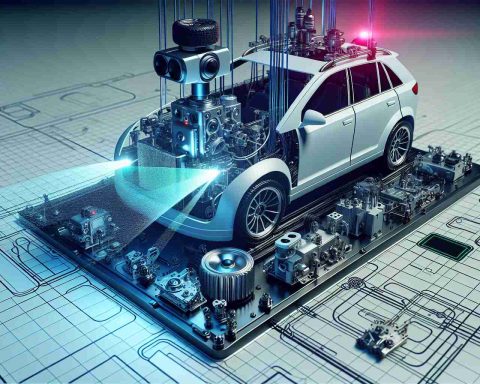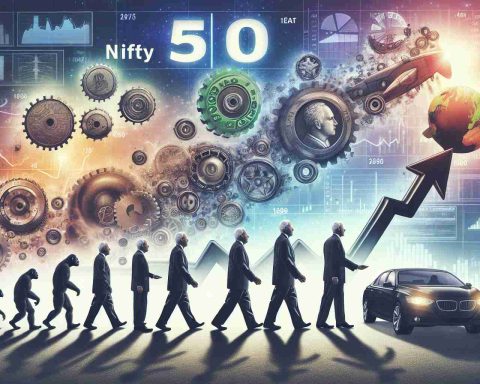- Tesla’s stock struggles, but its long-term growth outlook remains strong due to advances in autonomous driving technology.
- Planned initiatives include a mass-market electric vehicle by 2025 and innovations in full self-driving (FSD) technology, with potential game-changer projects like the Optimus robot.
- Geopolitical tensions, particularly U.S.-China trade disputes, could impact Tesla’s critical Chinese market presence and increase competition from local companies like BYD.
- Elon Musk’s multiple commitments, including leadership roles at SpaceX and X, raise concerns about his focus and potential political influences on Tesla’s appeal in Europe.
- Wedbush maintains a positive outlook on Tesla, reaffirming an Outperform rating and a $550 price target, highlighting Tesla’s potential to transform the automotive and AI sectors.
Tesla navigates a winding road, with current stock struggles casting shadows over its ambitious future. Yet, according to Wedbush, the company’s long-term growth trajectory remains not only intact but promising. This bullish outlook rests on Tesla’s revolutionary strides in autonomous driving technology, making the $1 trillion valuation dream seem reachable.
The horizon shimmers with Tesla’s bold ventures: the much-anticipated launch of a mass-market electric vehicle by early 2025, and groundbreaking advances in full self-driving (FSD) technology. The Optimus robot also looms as a potential game-changer. Amid a flurry of innovation, Tesla simultaneously pushes the boundaries of its EV and battery technologies, positioning itself as a catalyst for future industrial transformation.
However, geopolitical tensions loom large. As trade disputes between the U.S. and China intensify, Tesla eyes exemptions to safeguard its critical Chinese market—a market where domestic challengers like BYD intensify the competitive heat with budget-friendly autonomous vehicles.
Complicating Tesla’s journey is Elon Musk’s tangled web of commitments—from leading SpaceX and X to influencing U.S. policy. Concerns whisper of Musk’s divided focus and political maneuverings, reportedly cooling Tesla’s European allure, with delivery declines in nations like France and Germany.
Despite these hurdles, Wedbush’s faith in Tesla’s innovative spirit remains unshaken, reiterating an Outperform rating and a price target of $550. The takeaway is clear: while Tesla’s path is fraught with challenges, the brand’s pioneering ventures and strategic maneuvers could still propel it to new heights, redefining the automotive and AI landscape for years to come.
Tesla’s Ambitious Journey: Unveiling Hidden Challenges and Opportunities
Expanding the Tesla Narrative: New Insights Beyond the Headlines
Tesla continues to be a focal point in the automotive and technology sectors. While the source article highlights its ambitious growth trajectory, spearheaded by autonomous driving and innovative EV technology, there are additional facets worth exploring. These facets provide a deeper understanding of Tesla’s position in the global market and its future potential.
1. Advanced Battery Technology
Tesla’s continuous innovation in battery technology is a cornerstone of its strategy. Its development of the 4680 battery cells is expected to significantly enhance energy density, reduce costs, and improve the performance of its electric vehicles. This achievement could play a crucial role in making EVs more affordable and accessible worldwide. Tesla
2. The Rise of Energy Products
Beyond cars, Tesla’s energy products, such as the Powerwall and solar roof tiles, contribute to renewable energy adoption, aiding in the reduction of household carbon footprints. As global climate change initiatives intensify, this sector of Tesla’s business could witness substantial growth.
3. Semi-Truck and Cybertruck Developments
Tesla’s expansion into commercial vehicles with the upcoming Semi-Truck and the anticipated Cybertruck launch offer new revenue streams. These products are expected to disrupt their respective markets, highlighting Tesla’s versatility in automotive innovation.
4. Enhanced Competition Dynamics
Tesla’s dominance faces challenges from established automakers rapidly electrifying their fleets, alongside startups incorporating advanced technologies at competitive prices. Companies like Rivian and Lucid Motors, as well as traditional giants like GM and VW, are doubling down on EV commitments, potentially tightening the competition landscape.
5. Geopolitical Challenges
While U.S.–China trade tensions pose risks, Tesla is simultaneously exploring manufacturing expansions in other regions to mitigate these challenges. Its planned Gigafactories in Berlin and Texas are part of these strategic adjustments, ensuring it remains resilient against geopolitical uncertainties.
6. Regulatory and Safety Concerns
Tesla’s full self-driving technology, while innovative, is under regulatory scrutiny. Safety concerns and the need for regulatory approval in different markets could present obstacles that impact deployment timelines and market acceptance. However, successful navigation of these issues could solidify Tesla’s lead in autonomous driving technology. NHTSA
7. Tesla’s Influence on Policy and Regulation
Elon Musk’s influence extends to policymaking, especially pertinent in shaping regulations favorable to the broader adoption of electric vehicles. His capacity to influence both national and international policy decisions could be vital in advancing Tesla’s interests globally.
Conclusion
In understanding Tesla’s future, it’s crucial to recognize the symbiotic relationship between its innovative vision and external challenges. The company’s potential to redefine industry norms lies in navigating these multifaceted terrains effectively. Beyond producing cutting-edge vehicles, Tesla’s role in energy innovation and policy influence positions it as a transformative player in shaping a sustainable future.
Continue exploring Tesla’s journey and comprehensive updates at Tesla.






















